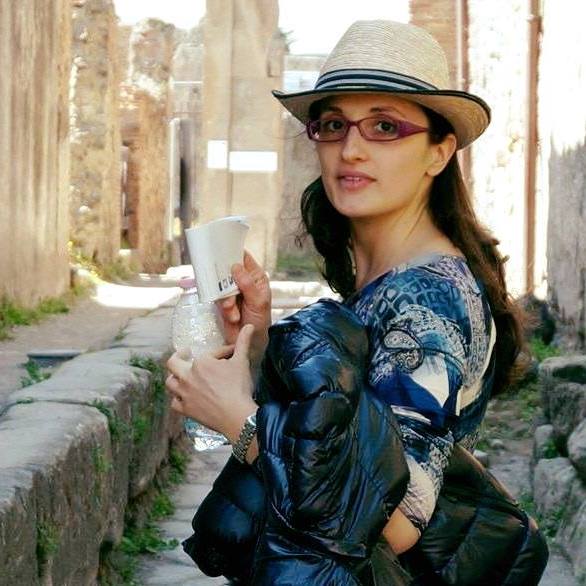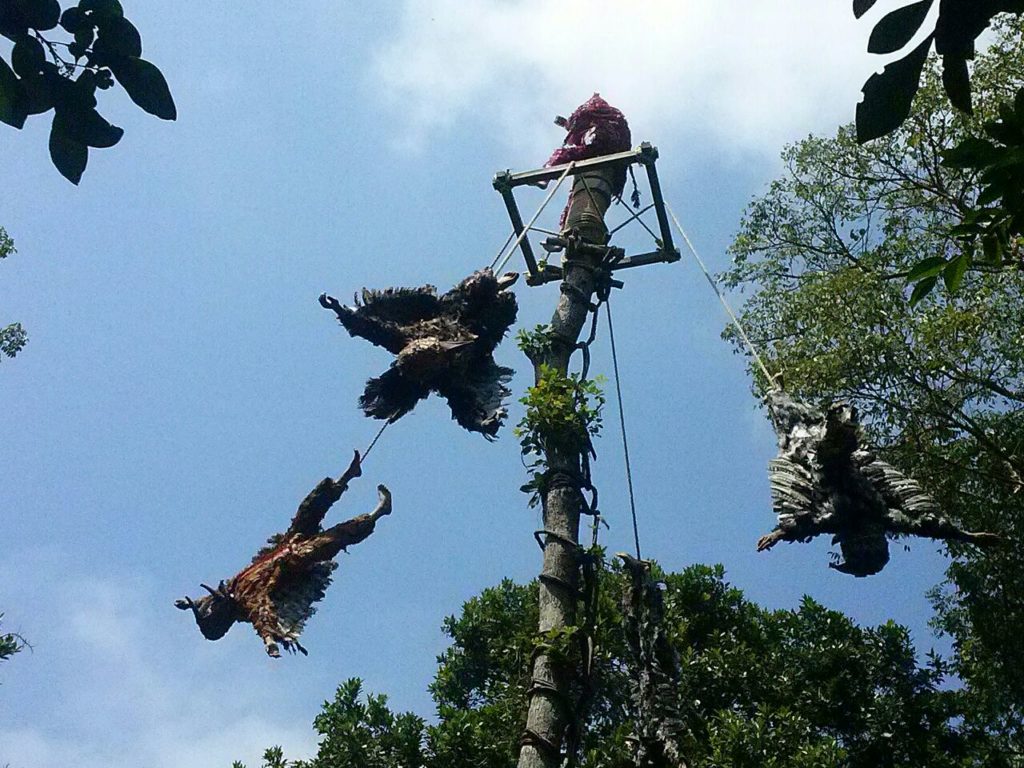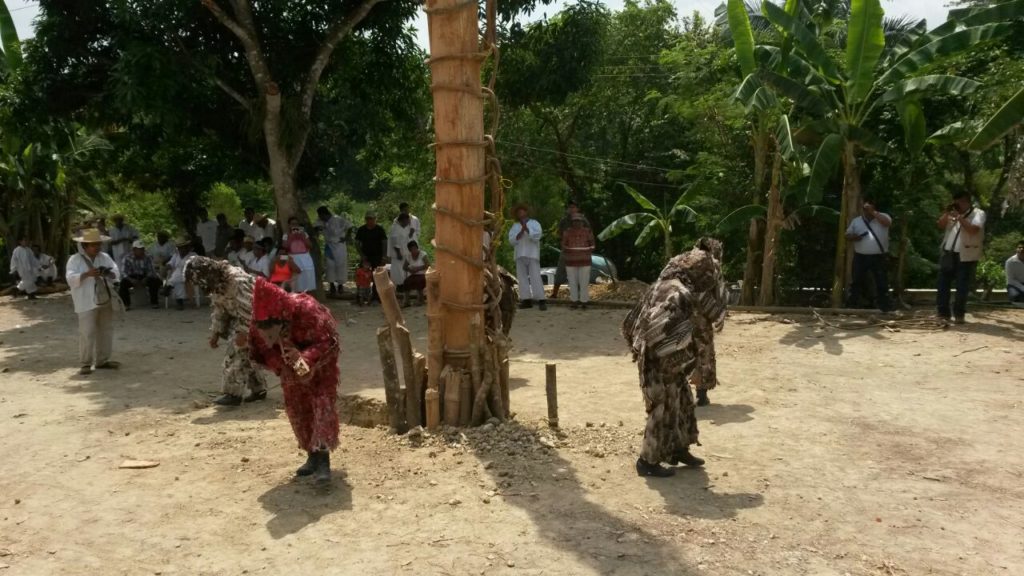We have had the fortune of meeting Dr. Luisa Villani, postdoctoral researcher at UNAM, Institute of Anthropology in Mexico City. She is also a professor of cognitive linguistics and anthropology at ENAH, National Anthropological and Historical University.

ArkeoMount (AM): Dr. Villani, You recently stated that the study of the Totonaca people, an indigenous Mesoamerican group primarily residing in the states of Veracruz, Puebla, and Hidalgo, is the project of your life. We are intrigued by your focus on mythical characters associated with atmospheric phenomena, such as Aktziní, linked to the Dance of the Flyers- “Los Voladores”. Could you briefly describe this ritual and explain why you consider it connected to a celebration of hurricanes rather than a solar rite?
Luisa Villani (LV): The relation between the Hurricane and the Flyers’ dance: I started studying the figure of the Hurricane in 2013 when I was writing my PhD thesis. That project was about the meteorological deity of the Hurricane. Among the Totonacs, this supernatural being is named Aktziní. Totonacs told me that this being was an orphan child, who left his home to find a job. He arrived at the house of Thunders, the Pyramid of Nichos in Tajín. The Thunders had and now have the role of watering the Earth with its beneficial rains and to do this, they use some dresses and objects as a sword. One day, when the Thunders left their house to go around the world to make it rain, Aktziní opened a trunk where the most powerful dress was, took it, and dressed with it, and he also grasped the sword. He started to turn in the air in a vortex becoming a hurricane. This twist of Aktziní has made me think about the twists the flyers make around the pole. One day in my fieldwork, I saw a little swirl, rising into the air and this fact made me think about the relation between the wind and the rain. In pre-Colombian culture, Quetzalcoatl among the Aztecs, as Aktziní among Totonacs, is the wind and he has the function to move the drops of rain. So, the Flyers who represent the four winds rise to the pole and then they move and become drops of rain, which come down from the pole and fertilize the Earth. Even if some researchers emphasize the role of the Sun in the Flyers’ dance, I don’t dismiss its role, but I emphasize more an aquatic symbology, and the fact that it is true the presence of the Sun in the dance, not as a star in the universe, but in its role of a cycle reviewer of life, as rain does.

AM: We understand that this ritual has been documented for at least 450 years and is now recognized as UNESCO’s Intangible Cultural Heritage. How is it experienced today by the local population? What is the actual involvement of the community in preparing for the concluding rite?
LV: The Flyers’ dance is a spectacular dance, and it is the most dangerous ritual dance; therefore, I think that it is for these reasons that it survived for many years in Mexico, from the pre-Columbian period to these days, from the north of Mexico, in the Huasteca region and Totonacapan region, and from Michoacan to the south of Mexico, in Guatemala. It has a symbolism, that these countries share, but every town has developed its own specific symbolism and it depends on different social and physical environments. It is a collective dance; for example, when flyers go to the mountain to cut the tree that will be the pole, the population, specifically men, go with them to help them carry the tree from the mountain to the town. In the meantime, women cook mole with chicken or turkey and receive population and flyers when they come back to town. This dance has changed in the last years because at the moment women also participate in dancing and flying.

AM: Let’s discuss the aspect of your current research that is engaging you. Could you give our readers an idea of the approach that places neuroscience, linguistics, and cognitive anthropology on an equal footing? Why and how do neurosciences, cognitive linguistics, and cognitive anthropology help analyze and understand this ritual dance better?
LV:
There is a relationship between our thoughts, our individual and collective thoughts, and our movements in the space. We can’t understand the world if we don’t move in the world, because being static, fixed in one place doesn’t let us communicate our ideas. I would say that it does not allow us to think because for cognitive anthropology and cognitive linguistics, thinking is especially something related to acting in the world. Our mental world has a physical base, the brain. One of the most recognized scientists of this time is an Italian scientist, Rizzolatti, who discovered mirror neurons. In our brain, there are these neurons that allow us to reproduce and represent in our mind the gestures and movements of other people. Thanks to these neurons, also in our eyes, and in our muscles, we reproduce and represent the movements of the others, and so it means that we are interacting with each other. In the dance, when dancers move, they are communicating to the audience their ideas and beliefs and also, they are interacting with the public and with their physical environment.
Dr. Villani, thank you so much for your time and availability! We hope to have future occasions to get in touch and share more about your interesting researches in Mexico!



